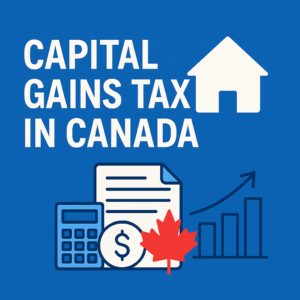Overview:
New rules for taxing capital gains have significant implications for owners of cottages and investment properties, necessitating prompt decision-making.
- Until June 24, property owners can sell a second property or cottage and pay tax on only half of the capital gain. After this date, the inclusion rate on capital gains exceeding $250,000 will increase to two-thirds.
- The capital gains inclusion rate has fluctuated over time, with adjustments made after previous federal elections. The potential for future changes underscores the importance of strategic planning.
- Industry professionals advise cautious decision-making, with considerations for potential tax implications and market dynamics. Selling prior to the deadline may be advantageous for some, while others may opt to wait.
- Under the new rules, the taxable amount of a capital gain is calculated based on a combination of the inclusion rates. This adjustment may affect middle-class families and long-term investors with significant property holdings.
- Property owners should assess the potential tax implications and explore strategies for minimizing tax exposure. Consultation with financial and legal professionals is recommended.
In Detail:
With recent changes to capital gains tax regulations, owners of cottages and investment properties face a crucial juncture necessitating swift decisions. The revised rules alter the tax landscape for properties held for decades, prompting owners to evaluate their options promptly.
Until June 24, property owners can capitalize on the existing tax framework, wherein they pay taxes on only half of their capital gains, irrespective of the amount. However, the federal budget proposes a notable shift post this deadline, envisaging an increase in the inclusion rate for capital gains exceeding $250,000 to two-thirds. Given the substantial appreciation in property values over the past decade, such gains are increasingly common in today’s real estate market.
Diana Mok, an adjunct professor at the University of Western Ontario specializing in real estate finance, anticipates a surge in hurried property sales preceding the impending tax hike. However, not everyone may be inclined to rush into decisions. Historical precedent indicates fluctuations in the capital gains inclusion rate over time, suggesting a potential for future adjustments. With the next opportunity for change likely after the upcoming federal election, property owners might opt to retain their secondary properties until after this eventuality, anticipating potential alterations in tax policies.
Lani Stern, a senior vice-president of sales at Sotheby’s International Realty Canada, advises caution, urging clients to sell only if already planned. The government’s budget forecasts a surge in capital gains tax revenue ahead of the inclusion rate hike, indicating a prevailing sentiment to capitalize on the current tax regime.
Under the new rules, a $500,000 capital gain would result in a taxable amount of $291,750, as opposed to $250,000 under the existing framework. This calculation involves a combination of the 50-percent inclusion rate and the two-thirds inclusion rate for respective portions of the gain. The actual tax liability would depend on an individual’s marginal tax rate.
While draft legislation for the revised capital gains rules is pending, John Oakey from Chartered Professional Accountants of Canada anticipates the possibility of spouses splitting gains on jointly-owned properties, allowing each to report up to $250,000 in capital gains at the existing inclusion rate.
Although touted as targeting high-net-worth individuals, the increased inclusion rate could impact middle-class families with long-held family cottages or investment properties. Principal residences remain exempt from capital gains tax, but gains from secondary properties are subject to taxation.
Andrew Guilfoyle, a partner at Chronicle Wealth, highlights the time-sensitive nature of transferring cottages to the next generation, given the impending tax changes. The need for legal documentation and property valuations adds complexity to the process.
Professor Mok anticipates a greater impact of the increased inclusion rate on long-term investors compared to property flippers, suggesting a potential adjustment period for the real estate market. However, historical instances such as the municipal land-transfer tax introduction in Toronto in 2008 indicate resilience in the face of regulatory changes, suggesting that property owners will adapt to the new tax regime over time.

















